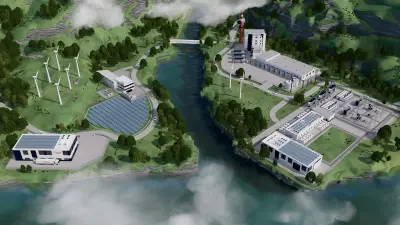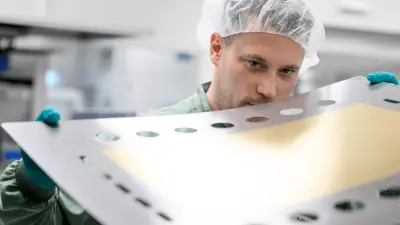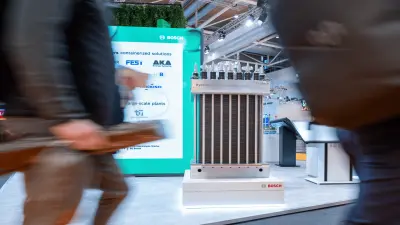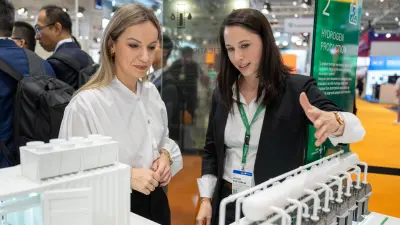Welcome to the future of energy
Let’s imagine it’s the year 2050.
The energy landscape is green – it is shaped by green hydrogen and climate-neutral electricity. Nobody can imagine burning fossil fuels like coal, crude oil, and natural gas anymore – that would be harmful to the climate, and bad for the environment and air quality. The only chimneys people see belching out smoke now are in old movies. With the technologies of today using hydrogen as an energy source, the only perceptible emission is water vapor.
Urban mobility is now more or less silent. Cars run on electric batteries, powered by electricity from renewable energy sources. Trucks and buses also have fuel cell drives, and the fuel they use is green hydrogen. Rail vehicles are powered by green electricity – and on lines without an overhead wire, trains are pulled by locomotives with fuel cell drives. There are no longer any direct CO2 emissions from road or rail vehicles.
When we breathe in, we notice that the air is so much cleaner than it was in the past, when fossil fuels were still used as a source of energy. Society’s aim to massively reduce CO2 emissions and air pollutants in mobility, industry, and commerce has been achieved through electrification, energy efficiency, and hydrogen from renewable sources. When we go for a stroll in the park, we find ourselves wondering whether the conversations and chatter we can hear coming from the nearby café have actually gotten louder. Or perhaps we can simply hear them a bit better than in days gone by, when fossil fuels were still the drivers of transport, industry, and everyday life.

We still have a way to go until 2050. There is still too much CO2 entering the atmosphere from buildings, industry and transport, and driving climate change. We have set our course for the energy world of 2050 and, in doing so, are supporting the energy transition. Our contribution is the development of innovations, new technologies, and solutions that safeguard precious natural resources, inspire people, and improve their quality of life – in short, solutions that are “invented for life.”
“On the one hand, we are improving (…) energy efficiency and pushing ahead with electrification and, on the other hand, we are committed to hydrogen as a more sustainable energy source.”
“Green hydrogen is essential if we want to make our world climate-neutral. It makes sense to use it in nearly every sector.”
One key aspect is integrating hydrogen technologies into the energy system of the future. Here is an overview of our technologies that are already helping to turn this vision into a reality:

















